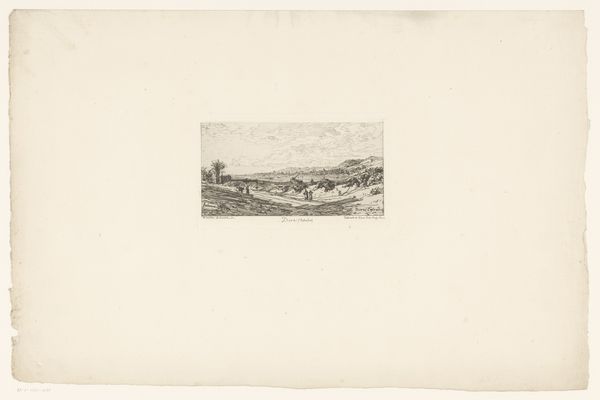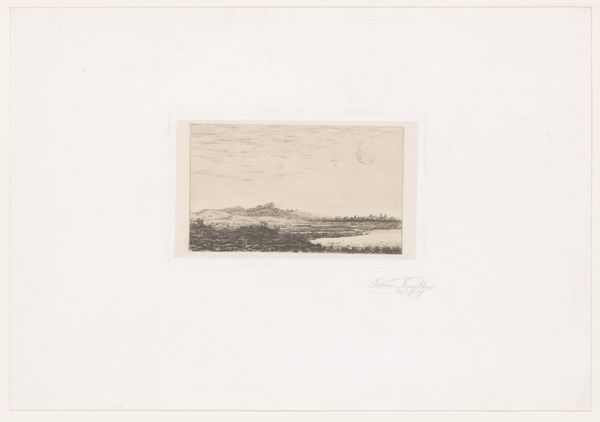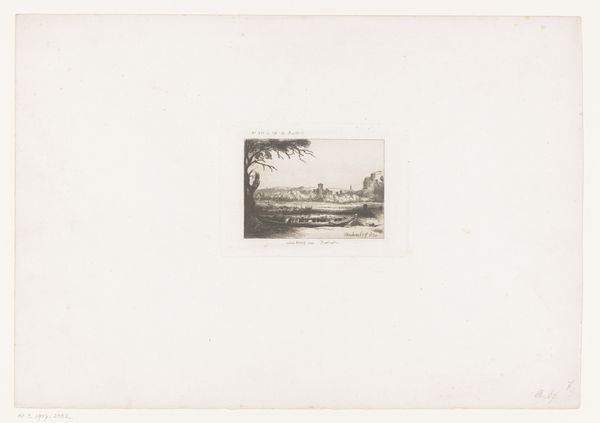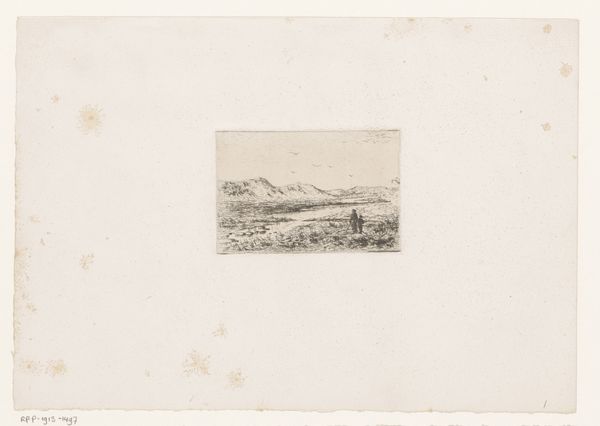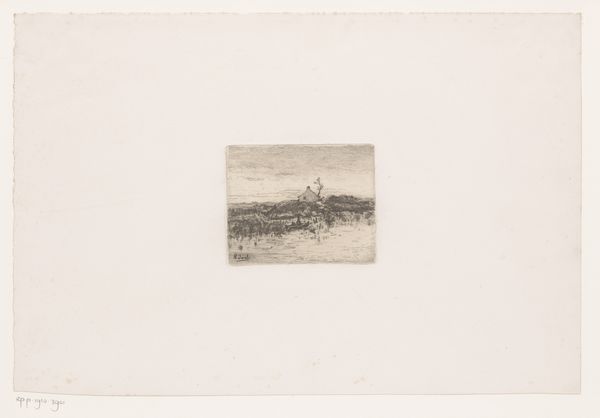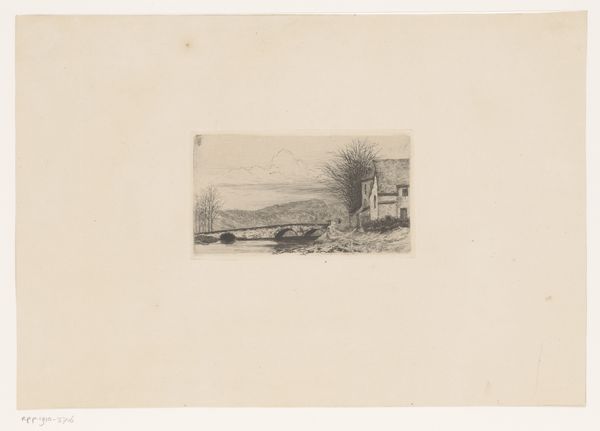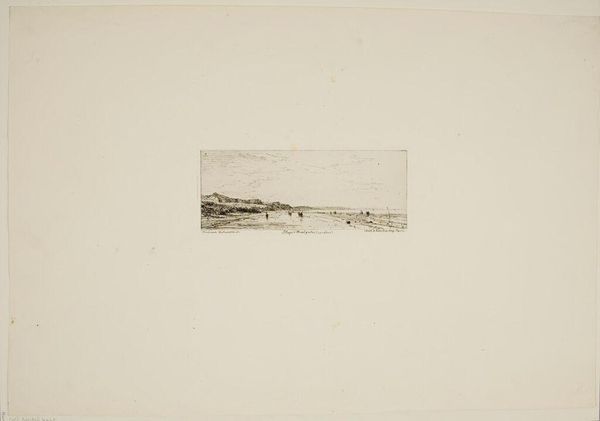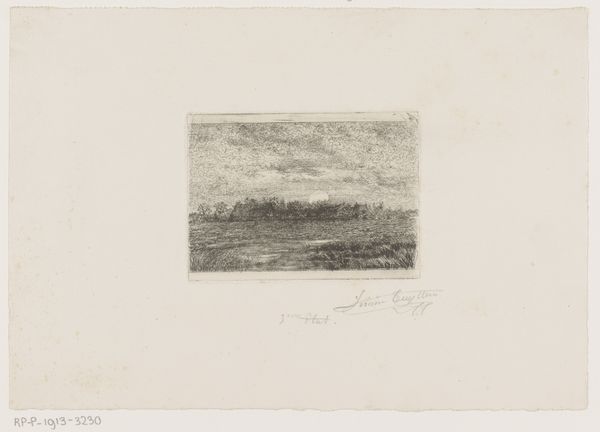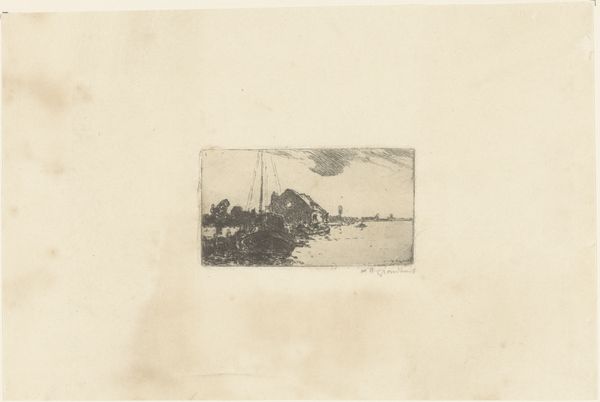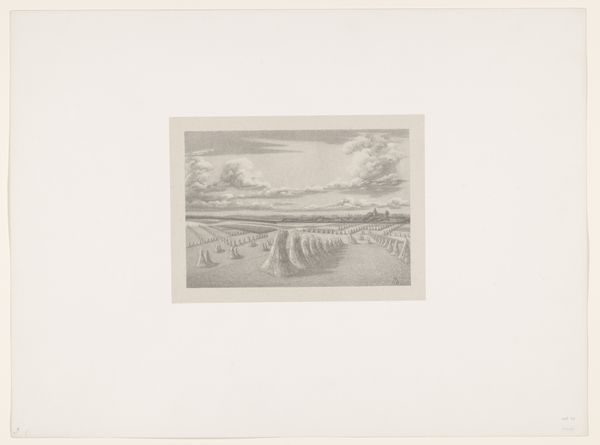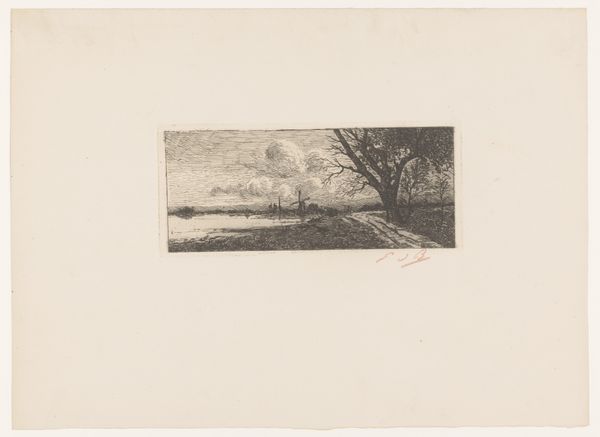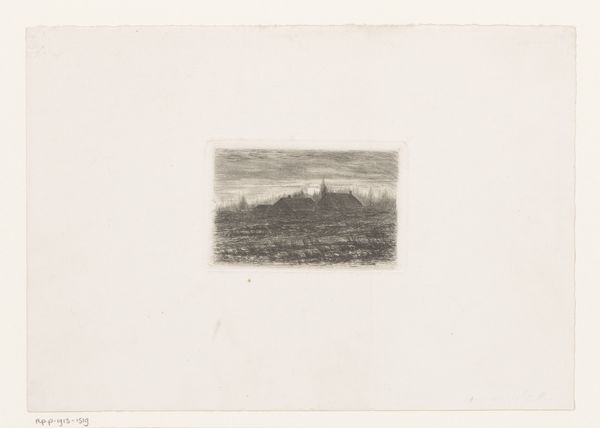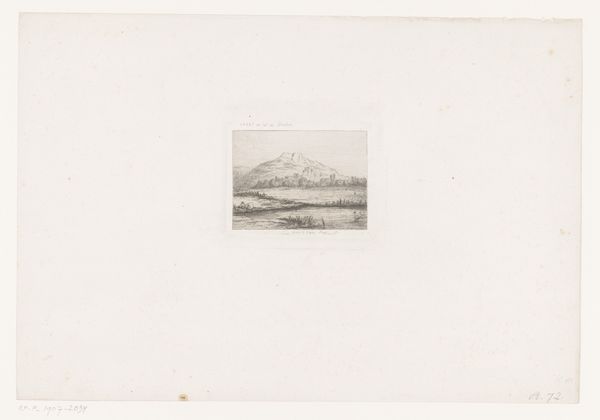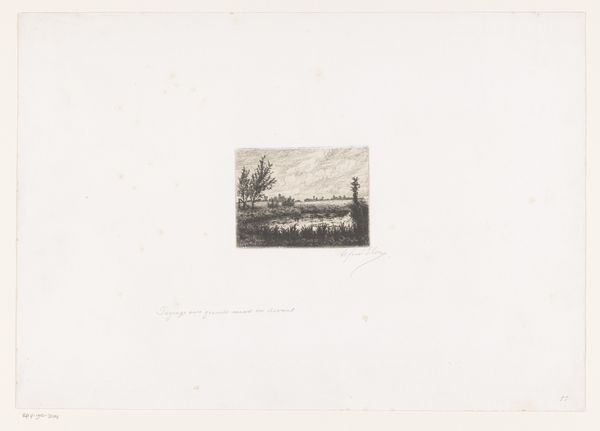
print, etching
# print
#
etching
#
old engraving style
#
landscape
#
realism
Dimensions: height 68 mm, width 161 mm
Copyright: Rijks Museum: Open Domain
Curator: Here we have Maxime Lalanne's "Gezicht op het strand van Houlgate in Calvados," an etching from 1869 now held in the Rijksmuseum collection. Editor: It's a very still piece; the muted tones and the fine lines create this feeling of quiet solitude on a wide, open beach. Curator: As an etching, Lalanne would have coated a metal plate with wax, scratched the image into the wax, and then bathed the plate in acid, which bites into the exposed metal lines. Think about that labor process, repeating actions of incision. Editor: It speaks volumes, doesn't it, about labor and leisure at the time. These leisurely figures strolling along the beach were enabled, surely, by other forms of labor hidden from our view within the coastal town? Who would have prepared the seaside town, and what does leisure afford a few versus others? Curator: Absolutely, and the production of prints like this democratized art viewing. Multiple impressions allowed wider audiences to consume landscapes—picturesque and, perhaps, sanitized—representations of leisure. Editor: Precisely. How many other hands have handled it and mass consumption brings forward conversations regarding societal accessibility. I find myself wondering about the materiality and process behind even this object of art on a material level. Were the tools to create this image equitable? Curator: Good questions. Lalanne aimed for realism, documenting the world around him. But remember, realism wasn't just about mirroring reality; it was also about responding to the rapid industrial and social changes of the 19th century. The rise of tourism along the Normandy coast, made possible by industrial transport. Editor: And the artist’s role within this societal infrastructure, right? It's so interesting how a seemingly simple image of a beach scene can unravel complex connections. Curator: Exactly. These scenes, while capturing a sense of beauty, also embody social hierarchies. A seemingly accessible image contains much layered, inequitable history when analyzed more deeply. Editor: That adds another dimension to appreciating this work—acknowledging its connection to labor practices, consumption, accessibility, and social conditions. It challenges the myth of neutral, detached art making, right?
Comments
No comments
Be the first to comment and join the conversation on the ultimate creative platform.
